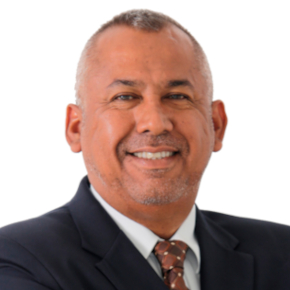Worker safety and health
Law No. 29783, Law on Occupational Health and Safety, aims to promote a culture of occupational risk prevention in the country.
It applies to all economic and service sectors that includes all employers and workers of the private sector labor regime throughout the national territory, workers and public sector officials, workers of the Armed Forces and the National Police of Peru, already self-employed.
Measures to prevent labor risks
The employer is obliged to prevent occupational hazards in the workplace with the following measures:
- Develop an Annual Policy and Program on Occupational Health and Safety: The employer must display said documentation in a visible place within the workplace.
- Develop an Internal Regulation of Safety and Health at Work: If you have 20 or more workers. The employer must deliver a copy of the regulation to each worker.
- Set up a Committee on Safety and Health at Work: If you have 20 or more workers. It must be made up of the same number of representatives from the employer and the workers.
- Appoint an Occupational Health and Safety Supervisor: If you have less than 20 workers. The supervisor is appointed by the same workers.
- Conduct training for the worker: The employer must carry out no less than 04 training per year on occupational safety and health.
- Prepare a Risk Map: The risk map will be prepared with the participation of the trade union organization, workers’ representatives, delegates and the occupational health and safety committee, which must be displayed in a visible place.
- Implement Records of the Occupational Health and Safety Management System: The records can be kept through physical or electronic means and must be updated and available to workers and the competent authority. These records must have the minimum information established in the formats of the Ministry of Labor and Employment Promotion. The Occupational Health and Safety Management (General Regime) records are the following:
- Registration of accidents at work, occupational diseases, dangerous incidents and other
incidents, which must include the investigation and the corrective measures. - Registration of occupational medical exams.
- Record of monitoring of physical, chemical, biological, psychosocial agents and dysergonomic risk factors.
- Register of internal occupational safety and health inspections.
- Health and safety statistics record.
- Security or emergency equipment registry.
- Induction registration, training, training and emergency drills.
- Audit log.
- Registration of accidents at work, occupational diseases, dangerous incidents and other
In the event that the employer has personnel under training modality and that they provide services independently, provided that they develop their activities totally or partially in their facilities, they will be registered in the records referred to in subsection a).
Companies that are micro or small companies (MYPES) can choose to benefit from the Simplified System of such registers, that is:
- Registration of accidents at work, occupational diseases, dangerous incidents and other incidents.
- Registration of occupational medical exams.
- Register of internal inspections of occupational safety and health
Documentation of the work safety and health management system
The employer must display the following documentation before an audit of SUNAFIL:
- The policy and objectives regarding occupational safety and health.
- The Internal Regulations for Safety and Health at Work.
- Hazards identification, risk assessment and control measures.
- The risk map.
- Preventive activity planning.
- The Annual Occupational Health and Safety Program.
Occupational medical exams
The employer must practice occupational medical exams to its workers as follows:
- Occupational medical examinations of workers should be performed every two years.
- In the case of new workers, their date of entry must be taken into account.
- In the case of workers with a current bond, the date of last medical exam.
- Workers or employers may request at the end of the employment relationship, conducting an occupational medical exam.
It should be taken into account that the aforementioned does not apply to companies that carry out high-risk activities, since these must be done before, during and at the end of the employment relationship.
Also, in no case will the cost of the medical examination be borne by the worker.
Infraction table
| Minor offenses | Serious offenses | Very serious offenses |
| Breach of merely formal obligations. | Breaches contrary to workers’ rights or when the merely formal and those related to inspections are transcended. | Breaches of special importance, which affect rights or specially protected workers. |
For more information, do not hesitate to contact us.


